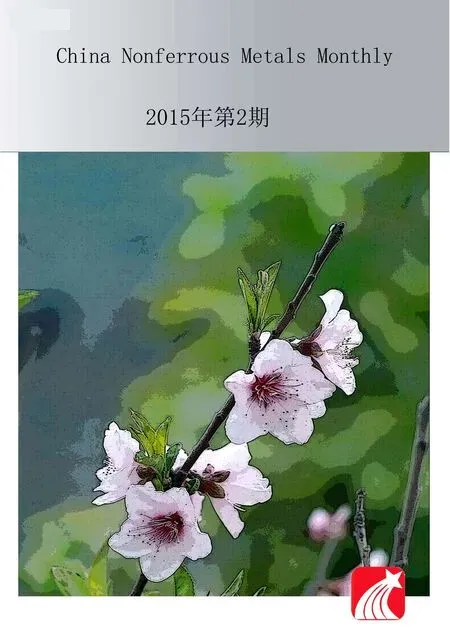Xinjiang Discovered the Largest Molybdenum Mine Deposit, Submitted 573000 Tonnes of Molybdenum Metal Volume
Xinjiang Discovered the Largest Molybdenum Mine Deposit, Submitted 573000 Tonnes of Molybdenum Metal Volume
According to Xinjiang Bureau of Geology and Mineral Exploration: An ultra large molybdenum mine was newly discovered near Yumin County, the molybdenum metal volume currently in application for record keeping is 573,000 tonnes, which is the biggest molybdenum mine deposit discovered in Xinjiang up till now.
The newly discovered molybdenum mine is called Suyou River Molybdenum Mine, which is situated at the western section of Barluk Mountain in western Jungar region, 100 km south of Yumin County. Since 2008, Xinjiang Bureau of Geology and Mineral Exploration and Golmud Jinshang Mining Company jointly carried out prospecting work on this mining zone. The geologists submitted 573,000 tonnes of molybdenum metal volume within the 30 sq km prospecting zone, in which rich ore is up to 130,000 tonnes, with an average grade of 0.187%. The Suyou River Molybdenum Mine is located at the Binbaerkeshi porphyry type copper and molybdenum metallogenic belt. Previously, Chinese geologists only discussed theoretically that western Jungar region is situated on this metallogenic belt; the discovery of Suyou River Ultra Large Molybdenum Mine proved the Binbaerkeshi porphyry type copper molybdenum metallogenic belt had extended to China’s Western Jungar region, and marked a major breakthrough in finding mines in Xinjiang in this metallogenic belt.
According to relevant chief person of the First Regional Survey Brigade of Xinjiang Bureau of Geology and Mineral Exploration, based on the existing molybdenum metal price, the rich ore part alone of Suyou River Molybdenum Mine could generate 20 billion yuan of economic value, total economic value of the resource could reach 60 billion yuan. After this Molybdenum Mine is developed, it will greatly boost regional economy in Yumin County and even in Tacheng region. It has been learned that molybdenum is a rare metal, and is widely used in metallurgy, machinery, chemical industry, military industry, and space industries. The absolute majority of molybdenum mines worldwide are in China, Xinjiang’s molybdenum mine resources are mainly distributed in Hami, Yining, Bole and Aksu regions.
According to Xinjiang Bureau of Geology and Mineral Exploration: The Kateba’asu Gold Mine, an ultra large gold mine discovered by Xinjiang geologists in Xinyuan County, recently obtained another major prospecting achievements: The gold resource volume of this mine increased from 53 tonnes to 76.6 tonnes, with a potential economic value topping 30 billion yuan. It has been learned that, Kateba’asu Gold Mine is one of the key projects of the autonomous Region’s “358” project. Since 2008, the First Regional Survey Brigade of Xinjiang Bureau of Geology and Mineral Exploration cooperated with Hainan Meisheng Group Co., Ltd to jointly carry out risk prospecting. In May last year, this mine submitted 53 tonnes of gold resource volume, after one year’s efforts, this mine has newly increased 23.6 tonnes of gold resource volume, reaching 76.6 tonnes, the average grade of industrial orebody reached 3.07 gram/tonnes.
According to experts, the “Central Asia Gold Waist Belt” situated in the Tianshan Mountains is a world-class metallogenic belt, several countries have discovered a number of large and ultra large gold mines in this metallogenic belt. Previously, China has not yet discovered any large gold mine on this metallogenic belt. At present, the east end and west end and the depth Kateba’asu Gold Mine have not been placed under control, it is expected in the long term the size of Kateba’asu Gold Mine can still grow slightly, hopeful to become an ultra large gold mine in China. Furthermore, this mine also discovered 47000 tonnes of copper metal volume, 1140 tonnes of associated silver metal volume, and 1.92 million tonnes of sulfur resource volume. At present, this mining zone has attracted an investment of 200 million yuan of social funds, the site selection and construction of the mine are still at preparation stage, construction of a simple road leading to the mining zone has kicked off, and the construction is expected to start at the end of 2015. After it is launched into production, it is expected each year it will contribute over 100 million yuan of tax to the regional economy.
 China Nonferrous Metals Monthly2015年2期
China Nonferrous Metals Monthly2015年2期
- China Nonferrous Metals Monthly的其它文章
- Export Rebate for 11 Copper Products Are Adjusted Upward, Which May Lead to Improvement in Industry Product Structure
- Shaanxi Nonferrous Metal’s Operating Revenue Topped 100 Billion Yuan, up by 13.18% on Y-o-Y Basis
- Shandong Plans to Cultivate Two Aluminum Industry Groups with Sales Income Topping 100 billion yuan Within Three Years
- Nanshan Aluminum Reached Strategic Cooperation with CSR Corporation Limited
- Shanxi Will Build Aluminum Deep Processing Industrial Park
- Chengdu Strengthens Cooperation with Chinalco
